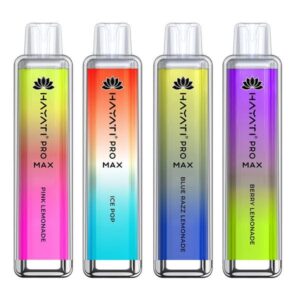Tobacco Harm Reduction: A Path to Healthier Choices

Tobacco use has been a global health concern for decades, causing millions of deaths and a multitude of health problems. While quitting smoking entirely is the best option for health, it’s often easier said than done due to the highly addictive nature of nicotine. Tobacco harm reduction (THR) is an approach that aims to reduce the adverse health effects of tobacco use by offering alternative, less harmful nicotine products. In this article, we will explore the concept of tobacco harm reduction, its potential benefits, and some of the products associated with this approach.
Understanding Tobacco Harm Reduction
Tobacco harm reduction is a public health strategy that recognizes that not all nicotine products are equally harmful. Instead of focusing solely on abstinence, THR seeks to provide smokers with less harmful alternatives to traditional combustible tobacco products like cigarettes. The key principle is to switch smokers from more harmful forms of nicotine consumption to less harmful ones.
Benefits of Tobacco Harm Reduction
- Reduced Health Risks: The primary benefit of THR is the reduction in health risks associated with smoking. Traditional cigarettes contain numerous harmful chemicals produced through combustion, which are responsible for the vast majority of smoking-related diseases. By switching to alternative nicotine products, smokers can significantly reduce their exposure to these harmful substances.
- Smoking Cessation Aid: THR can serve as a bridge for smokers who have failed multiple quit attempts. Many smokers find it difficult to quit abruptly, but they may find success by gradually transitioning to less harmful products before quitting altogether.
- Personal Choice and Autonomy: THR respects individuals’ autonomy and choices regarding their nicotine consumption. It acknowledges that some people may choose to continue using nicotine, and THR offers them a safer path to do so.
- Reduced Secondhand Smoke Exposure: Switching to smoke-free nicotine products can also benefit non-smokers by reducing their exposure to secondhand smoke, which is known to be harmful.
Alternative Nicotine Products
Several alternative nicotine products are associated with tobacco harm reduction:
- Electronic Cigarettes (E-cigarettes): E-cigarettes are battery-operated devices that vaporize a nicotine-containing liquid. They provide a similar hand-to-mouth motion and sensation as smoking but without the harmful combustion by-products.
- Heat-Not-Burn (HNB) Devices: HNB devices heat tobacco at lower temperatures than traditional cigarettes, producing an inhalable vapor with reduced levels of harmful chemicals.
- Nicotine Replacement Therapy (NRT): NRT includes products like nicotine gum, patches, and lozenges. While not as pleasurable as smoking, they offer a controlled and regulated source of nicotine to help with withdrawal symptoms.
- Snus: Snus is a smokeless, moist tobacco product that is placed under the upper lip. It is associated with lower health risks compared to smoking and is popular in some European countries.
Conclusion
Tobacco harm reduction offers a pragmatic approach to reducing the harm caused by tobacco use. While complete tobacco cessation remains the ultimate goal for public health, THR recognizes that some individuals may struggle to quit and provides them with safer alternatives. It is essential to continue research into the safety and efficacy of these alternative nicotine products to ensure they genuinely reduce harm. Moreover, effective regulation and education are crucial components of any successful tobacco harm reduction strategy. Ultimately, the goal is to save lives and improve public health by offering smokers a viable path towards a less harmful nicotine consumption choice.






